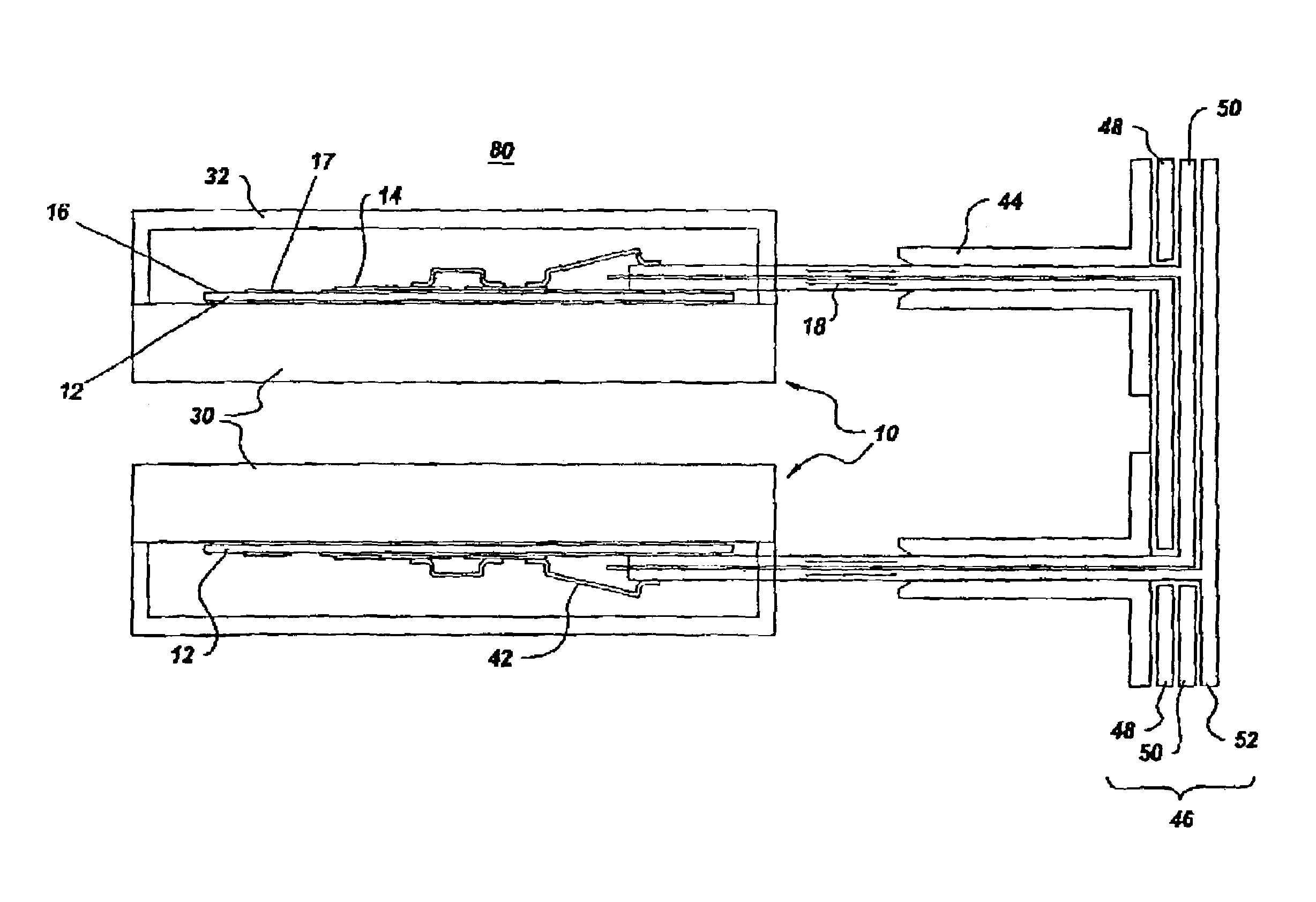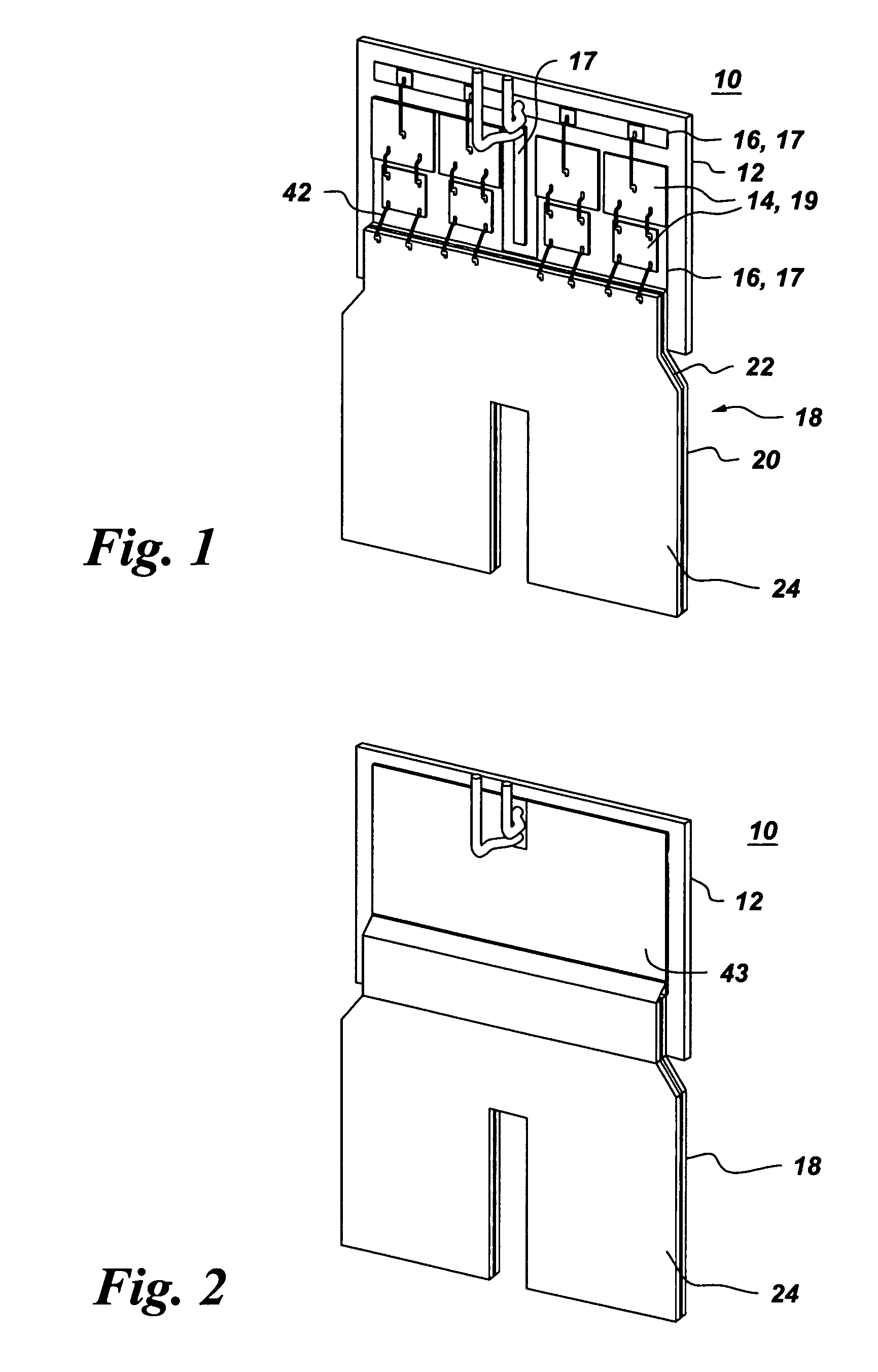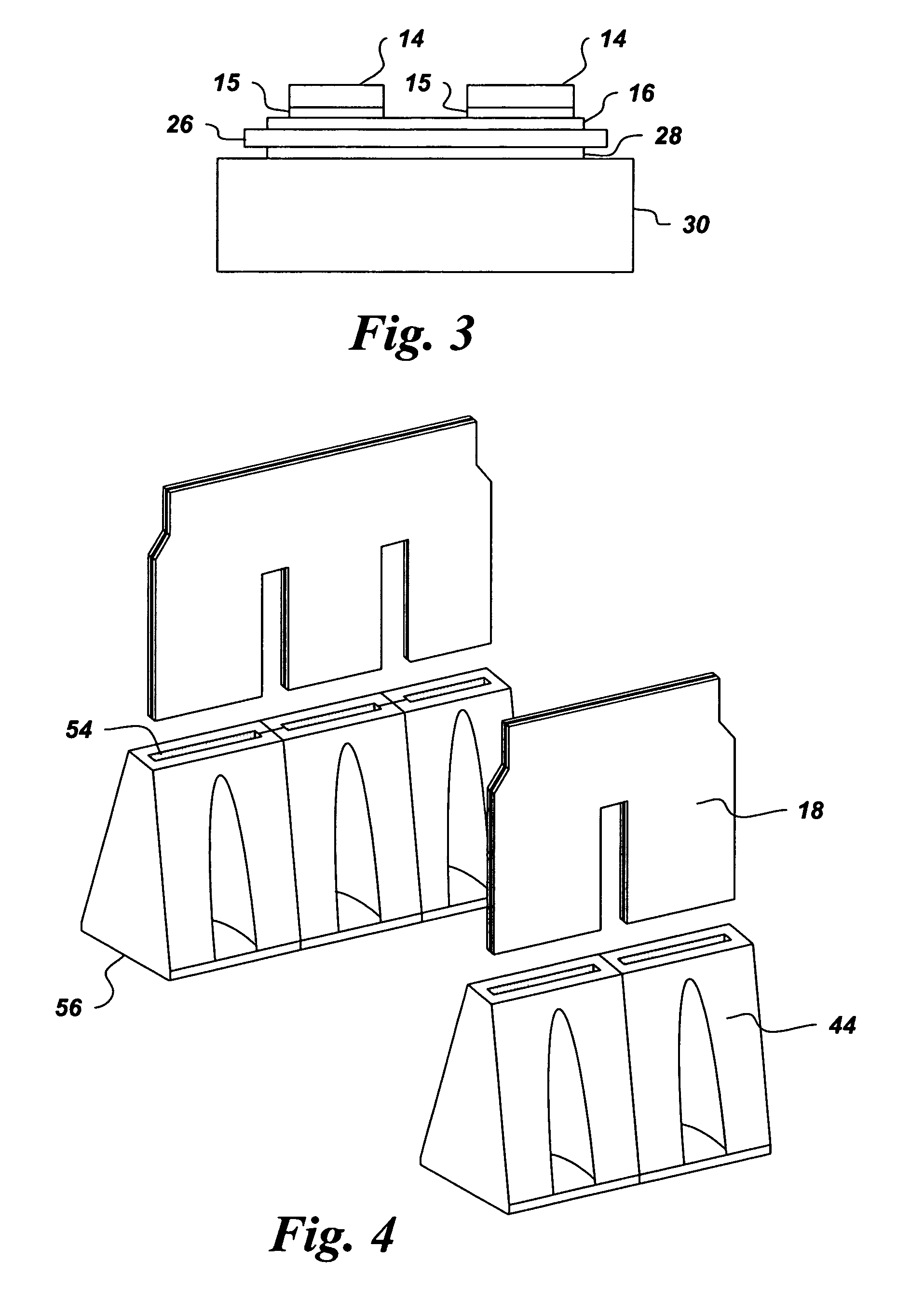Power module, and phase leg assembly
a power module and phase leg technology, applied in the direction of printed circuit manufacturing, printed circuit aspects, orthogonal pcbs mounting, etc., can solve the problems of high parasitic inductance of conventional packaging technology, significantly higher electrical stress, and poor current sharing between power devices
- Summary
- Abstract
- Description
- Claims
- Application Information
AI Technical Summary
Benefits of technology
Problems solved by technology
Method used
Image
Examples
Embodiment Construction
[0029]A single switch power module 10 embodiment of the invention is described with reference to FIGS. 1 and 3. Those skilled in the art will recognize that although power module 10 is described for a single switch configuration, power module 10 is equally applicable to other configurations. As shown, for example, in FIG. 1, power module 10 includes a substrate 12 with an upper layer 16 that includes at least one electrically conductive pattern 17 and is configured for receiving at least one power device 14. An exemplary electrically conductive pattern 17 is illustrated in FIG. 1. As indicated in FIG. 3, substrate 12 further includes an electrical insulator 26 and a thermal coupling layer 28. Electrical insulator 26 is disposed between upper layer 16 and thermal coupling layer 28. Thermal coupling layer 28 is configured for thermal coupling to a heat sink 30. Power module 10 further includes a laminar interconnect 18 that includes a first electrically conductive layer 20, an insulat...
PUM
 Login to View More
Login to View More Abstract
Description
Claims
Application Information
 Login to View More
Login to View More - R&D
- Intellectual Property
- Life Sciences
- Materials
- Tech Scout
- Unparalleled Data Quality
- Higher Quality Content
- 60% Fewer Hallucinations
Browse by: Latest US Patents, China's latest patents, Technical Efficacy Thesaurus, Application Domain, Technology Topic, Popular Technical Reports.
© 2025 PatSnap. All rights reserved.Legal|Privacy policy|Modern Slavery Act Transparency Statement|Sitemap|About US| Contact US: help@patsnap.com



